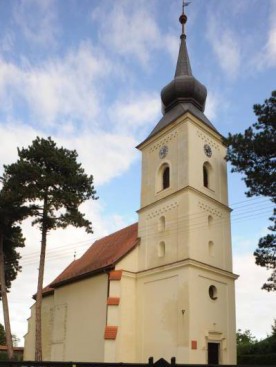The Calvinist Church – AnarcsThe settlement is located in the northern part of the Nyírség area, south to Kisvárda. According to certain opinions, the name of the village is a variant of the noun ‘arany’ (gold) followed by the suffix ‘cs’. It was mentioned for the first time in 1212. The settlement consisted of two villages: Kis- and Nagyanarcs, the latter being owned by István (Stephen) of the Gutkeled clan. Accounts speak of two churches in Anarcs. The stone church of the settlement, which was called later Nagyanarcs, must have been built in the second half of the 13th century. This was, the predecessor of the present church. When the extant church has been explored, the foundations of the Romanesque church, enclosed by a straight line have been discovered. Two walls of this early church still exist: the northern wall of the nave, extending to the chancel arch, and parts of the western wall. This church was first mentioned in 1375; the source also specifies that it had been dedicated to Saint Peter. The reasons for demolishing this early church are unknown. The stylistic features of the present church suggest that a major rebuild was carried out between 1450 and 1490. Extensions were added to the eastern and southern sides of the Romanesque church, thus creating the present-day singe-nave church. Buttresses fortify the church, and its sanctuary is enclosed by several sides of a polygon. A semicircular chancel arch separates the nave and the sanctuary. Initially, a Gothic, double-cell ribbed groin vault ceiling covered the latter. Four windows spanned by lancet arches provide light to the church’s inner space. A sedilia for priests was built on the southern side of the sanctuary as well as the gate of the sacristy and the tabernacle – dated 1457 and decorated with pinnacles, a finial and the coat of arms of the Anarcsi family – on the northern side. A new sacristy was built on the northern side of the church, too. The Gothic style groin vault ceiling of the sanctuary was destroyed being replaced by the end of the 18th and the beginning of the 19th century by a barrel vault ceiling. Between 1856 and 1858, a tower was erected in front of the church’s western frontispiece. The last restoration was performed between 1998 and 2000. The inner space of the medieval sanctuary was remade and the foundations of the Romanesque church have been revealed by opening the floor. |













